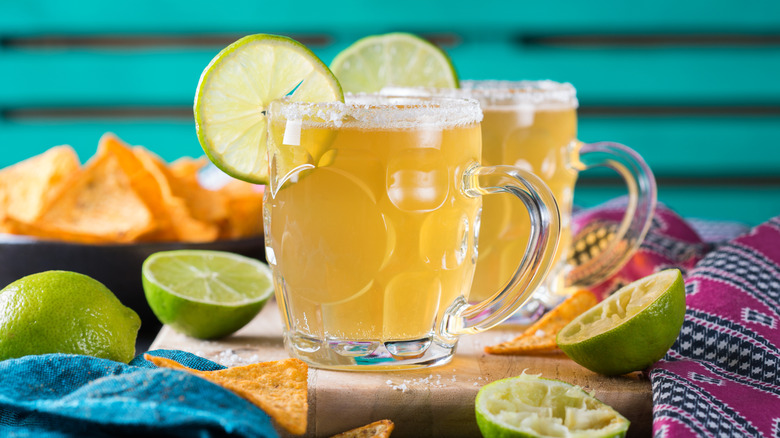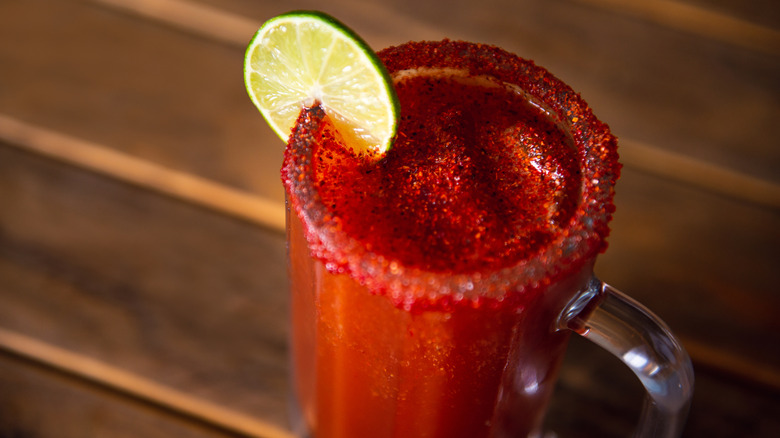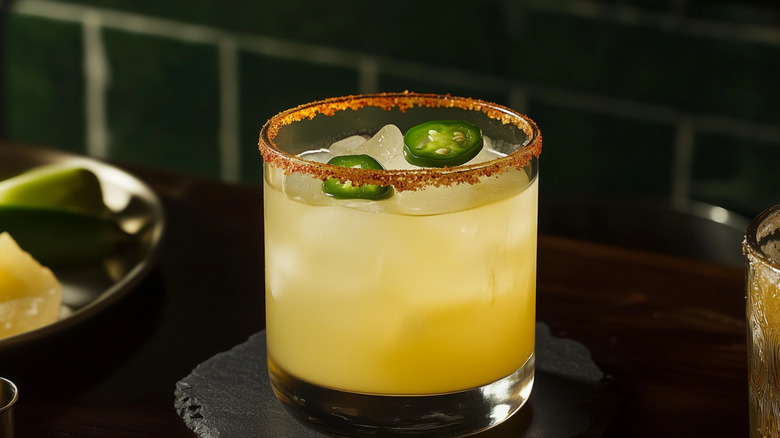What Is Beer Salt And How Do You Use It?
People are picky when it comes to their beer. There's the style, which could mean anything from an amber ale, to a lager, to maybe a deep brown porter. Then there's how you drink it — do you want your ale in a chilled glass straight from the tap? Or will a basic can do the trick? However, what most people don't consider when it comes to drinking beer is the seasoning. But that's not how it's done in Texas. In the state where everything's a little bigger, they bring out bold flavors in their brews with their very own beer salt.
Beer salt is a seasoned salt that you can sprinkle onto not only beer, but almost any beverage to give it a kick. Although it's been a Texas staple since the early 90s, it has roots south of the border. Its history in the States goes back to Texas native and founder of Twang Beer Salt, Roger Treviño Sr., who once visited Mexico City and was taken with a particular flavored salt a street vendor sold. He described it as being like a saltier version of sweet Pixy Stix. It was so good that he wanted flavored salt back at home, and that's how he started the widely-used beer salt brand Twang.
The base of beer salt is typically a high-quality salt, which then can be infused with everything from citrus zest, chili powder, dried spices, and even dehydrated vegetables. The result are salts that can add a fruity, spicy, or even smoky bend to your brew. Think of it as a garnish for your beer; it won't overpower the flavor you love, but will add a subtle kick you didn't know it needed.
The practice of salting beer actually goes back to the Prohibition Era
Although packaged beer salt is a bit more modern, the practice of using a few sprinkles of salt to cut down on the bitterness of beer or to enhance its flavor actually dates all the way back to Prohibition times. In the early 20th century when real beer was outlawed in the U.S., the only type of brew that could be legally sold was an extremely low-alcohol fermented malt beverage known as near beer. Adding something savory like salt, or even spicy like horseradish, helped make the not-so-tasty beer almost drinkable.
Meanwhile, the infamous michelada beer cocktail was being invented in Mexico at around the same time. The original version was known as a chelada and featured beer over ice with lime juice and salt coating the rim of the glass. Eventually came the addition of hot sauces like chamoy (a spicy, sweet condiment made from pickled fruit), Worcestershire sauce, and tomato juice. Needless to say, the practice of elevating beer with various seasonings wasn't novel by the time Twang came around, but it has made beer salt more widely-used and accessible.
Flavor pairings to try with beer salt
Although the name might make it sound limited, beer salt is actually an incredibly versatile seasoning. It can bring out rich flavors in domestic lagers or a more complex imported beer. You can sprinkle it on top of a foamy ale and let it absorb into the drink, or add it to the rim to get a bold kick of it during every sip — and every style has a specific salt that pairs with it well. Lagers pair best with a classic sea salt, while it probably comes as no surprise that wheat beers pair well with a citrus-infused salt. For IPAs, try something spicy, and for stouts go with smoky.
If you aren't a beer drinker, the salt still comes in handy as it also pairs well with hard seltzers, mixed drinks, and even canned cocktails. Black beer salt, a smoky, herbal choice, can add dramatic color to a cocktail and pairs well with something like a similarly smoky mezcal margarita. Something lime-infused and fruity goes great with a bloody mary or a vodka soda, while a more floral, herby salt is great with a gin and tonic. A pinch of salt can elevate your glass of red wine as well. Regardless of what you decide to pair it with, beer salt is definitely worth a try.


